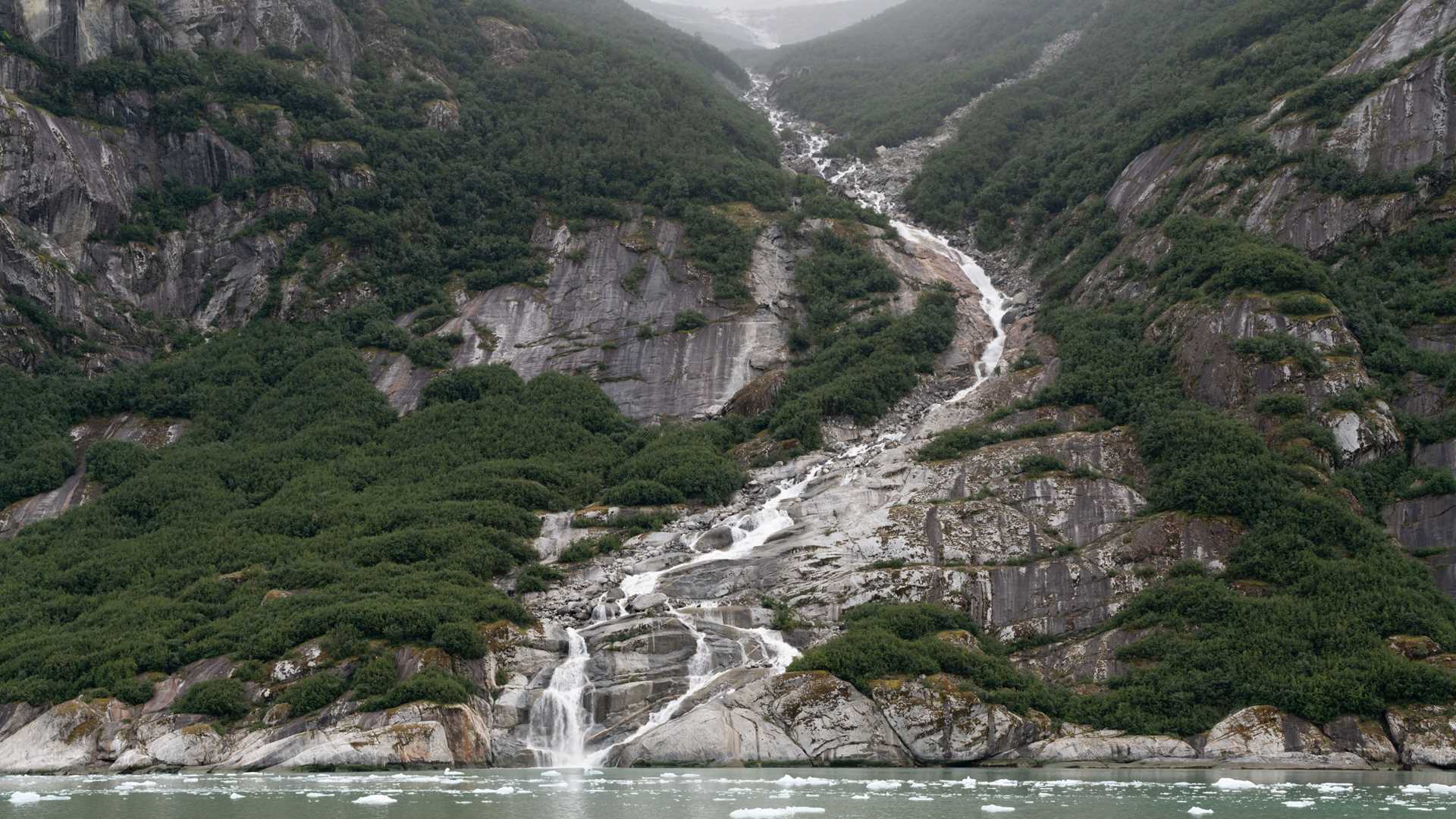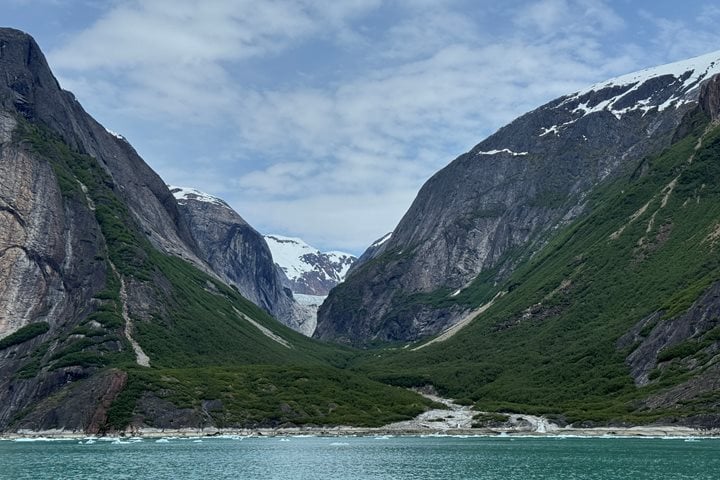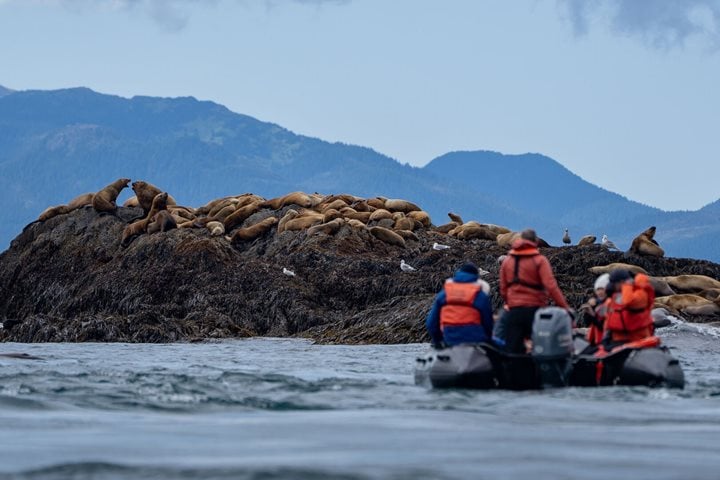653,000 acres. That is roughly the size of Tracy Arm-Fords Terror Wilderness Area, which encompasses Tracy Arm, Endicott Arm, the glaciers that carved them, and much of the Stikine Ice Field up to the border between the US and Canada.
It makes one feel small, cruising into Endicott with Yosemite-esque rock rising straight up out of sometimes one-thousand-foot-deep water, glaciers hanging high in the U-shaped valleys between rounded peaks, and eventually approaching Dawes Glacier at the head of the fiord.
As we slowly cruised up the fiord this morning, we found several mountain goats lounging high on the rocks. A mama goat stood and stretched her legs, her kid resting beside her.
Near the face, we launched our landing crafts for tours around the floating ice and quickly learned about the cooling effect of the katabatic winds that accelerate off the glaciers, pressed by gravity beneath warmer air layers in the fiord, and chilling everything in their path.
Arctic terns and harbor seals, unbothered by the cold, rested on floating ice, each with its own specializations for survival in this sometimes-brutal environment––feather and fat, whisker and wing––marvels of evolutionary adaptation.
Back on National Geographic Sea Lion, we reversed our course, winding back through the wilderness pondering just how small this massive wilderness is when put in context of the seventeen-million-acre Tongass National Forest it is a part of. We are, indeed, nothing more than specks, “stardust” as the songwriter suggests, out exploring the garden.







